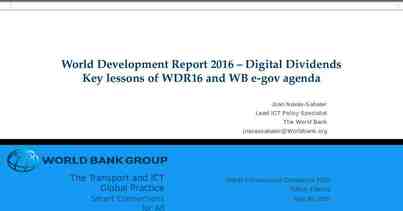23: Network Management: Firewalls and SNMP Last Modified: 05/18/24
40 Slides452.50 KB
23: Network Management: Firewalls and SNMP Last Modified: 05/18/24 06:40 PM 8: Network Management 1
Types of firewalls Packet Filtering firewall Operate on transport and network layers of the TCP/IP stack External Network Internal Network Packet Filtering Firewall Application Gateways/Proxies Operate on the application protocol level Proxy Client Proxy Firewall Actual Server 8: Network Management 2
Packet Filtering Firewall Operate on transport and network layers of the TCP/IP stack Decides what to do with a packet depending upon the following criteria: Transport protocol (TCP,UDP,ICMP), Source and destination IP address The source and destination ports ICMP message type/code Various TCP options such as packet size, fragmentation etc 8: Network Management 3
Packet Filtering Example 1: block incoming and outgoing datagrams with IP protocol field 17 and with either source or dest port 23. All incoming and outgoing UDP flows and telnet connections are blocked. Example 2: Block inbound TCP segments with ACK 0 or with SYN bit set and ACK bit unset. Prevents external clients from making TCP connections with internal clients, but allows internal clients to connect to outside. 8: Network Management 4
Packet Filtering Firewall: Terminology Stateless Firewall: The firewall makes a decision on a packet by packet basis. Stateful Firewall : The firewall keeps state information about transactions (connections). NAT - Network Address translation Translates public IP address(es) to private IP address(es) on a private LAN. We looked at this already (must be stateful) 8: Network Management 5
Packet Filtering Firewall: Functions Forward the packet(s) on to the intended destination Reject the packet(s) and notify the sender (ICMP dest unreach/admin prohibited) Drop the packet(s) without notifying the sender. Log accepted and/or denied packet information NAT - Network Address Translation 8: Network Management 6
Packet Filtering Firewall: Disadvantages Filters can be difficult to configure. It’s not always easy to anticipate traffic patterns and create filtering rules to fit. Filter rules are sometimes difficult to test Packet filtering can degrade router performance Attackers can “tunnel” malicious traffic through allowed ports on the filter. 8: Network Management 7
Application Gateway (Proxy Server) Operate at the application protocol level. (Telnet, FTP, HTTP) Filters packets on application data as well as on IP/TCP/UDP fields Application Gateways “Understand” the protocol and can be configured to allow or deny specific protocol operations. Typically, proxy servers sit between the client and actual service. Both the client and server talk to the proxy rather than directly with each other. 8: Network Management 8
Application gateways gateway-to-remote host telnet session host-to-gateway telnet session Example: allow select internal users to telnet outside. application gateway router and filter 1. Require all telnet users to telnet through gateway. 2. For authorized users, gateway sets up telnet connection to dest host. Gateway relays data between 2 connections 3. Router filter blocks all telnet connections not originating from gateway. 8: Network Management 9
Application Gateway (Proxy Server): Disadvantages Requires modification to client software application Some client software applications don’t accommodate the use of a proxy Some protocols aren’t supported by proxy servers Some proxy servers may be difficult to configure and may not provide all the protection you need. 8: Network Management 10
Firewall Hardware/Software Dedicated hardware/software application such as Cisco PIX Firewall which filters traffic passing through the multiple network interfaces. A Unix or Windows based host with multiple network interfaces, running a firewall software package which filters incoming and outgoing traffic across the interfaces. A Unix or Windows based host with a single network interface, running a firewall software package which filters the incoming and outgoing traffic to the individual interface. 8: Network Management 11
Firewall Architecture In the real world, designs are far more complex Core Switch DMZ Internal Router Core Switch External Firewall Internal Firewall IDS Core Switch Internal Network Web Server Border Router External Network Modem 8: Network Management 12
Limitations of firewalls and gateways IP spoofing: router can’t know if data “really” comes from claimed source If multiple app’s. need special treatment, each has own app. gateway. Client software must know how to contact gateway. Filters often use all or nothing policy for UDP. Tradeoff: degree of communication with outside world, level of security Many highly protected sites still suffer from attacks. e.g., must set IP address of proxy in Web browser 8: Network Management 13
Snort A misuse/signature based scheme. Three primary uses Packet sniffer Packet logger Intrusion Detection System 8: Network Management 14
Snort IDS Snort consists of three subsystems: packet decoder (libpcap-based) detection engine logging and alerting subsystem Detection engine: Rules form signatures Modular detection elements are combined to form these signatures Anomalous activity detection is possible: stealth scans, OS fingerprinting, invalid ICMP codes, etc. Rules system is very flexible, and creation of new rules is relatively simple 8: Network Management 15
Snort: Sample IDS output Apr 12 01:56:21 ids snort: EXPLOIT sparc setuid 0: 218.19.15.17:544 xxx.yyy.zzz.41:37987 Apr 12 01:56:21 ids snort: EXPLOIT x86 NOOP: 23.91.17.7:544 xxx.yyy.zzz.41:37987 Apr 12 07:31:03 ids snort: ICMP Nmap2.36BETA or HPING2 Echo : 63.26.255.221 xxx.yyy.zzz.34 Apr 12 09:59:38 ids snort: RPC portmap request rstatd: 28.11.67.132:1033 xxx.yyy.zzz.29:111 Apr 12 13:20:05 ids snort: ICMP Nmap2.36BETA or HPING2 Echo : 12.13.1.67 xxx.yyy.zzz.126 Apr 12 14:13:22 ids snort: RPC portmap request rstatd: 134.1.5.12:3649 xxx.yyy.zzz.29:111 Apr 12 20:19:34 ids snort: BACKDOOR back orrifice attempt: 209.255.213.130:1304 xxx.yyy.zzz.241:31337 Apr 12 22:53:52 ids snort: DNS named iquery attempt: 209.126.168.231:4410 xxx.yyy.zzz.23:53 8: Network Management 16
Snort Rules Snort rules consist of two parts Rule header Specifies src/dst host and port Alert tcp !128.119.0.0/16 any - 128.119.166.5 any Notice: negation, any in network 128.119.0.0 Rule options Specifies flags, content, output message (flags: SFAPR; msg: “Xmas tree scan”) Using both parts together gives snort great flexibility Variables are allowed in the ruleset 8: Network Management 17
Writing Snort Rules Snort uses a simple rules language http://www.snort.org/writing snort rules.htm Rule header consists of Rule Actions Alert, Log, Pass Dynamic, activate, etc Protocol Tcp, udp, icmp, etc IP Addresses Source, dest, CIDR mask Port numbers Source, dest, range Direction Negation 8: Network Management 18
Simple examples log tcp any any - SMTP 23 (msg: “telnet to the mail server!”;) alert tcp HOME NET 23 - EXTERNAL NET any (msg: “TELNET login incorrect”; content: “Login incorrect”; flags: A ;) alert icmp any any - any any (msg:”ICMP Source Quench”; itype: 4; icode: 0;) 8: Network Management 19
Prewritten Rulesets Snort comes packaged with a number of prewritten rulesets include bad-traffic.rules include exploit.rules include scan.rules include finger.rules include ftp.rules include telnet.rules include smtp.rules include rpc.rules include rservices.rules include dos.rules include ddos.rules include dns.rules include tftp.rules include web-cgi.rules include web-coldfusion.rules include web-frontpage.rules . 8: Network Management 20
Example: smtp.rules alert tcp EXTERNAL NET any - SMTP 25 (msg:"SMTP RCPT TO overflow"; flags:A ; content:"rcpt to 3a "; dsize: 800; reference:cve,CAN-20010260; reference:bugtraq,2283; classtype:attempted-admin; sid:654; rev:1;) alert tcp EXTERNAL NET 113 - SMTP 25 (msg:"SMTP sendmail 8.6.9 exploit";flags: A ; content:" 0a D/"; reference:arachnids,140; reference:cve,CVE-1999-0204; classtype:attempted-admin; sid:655; rev:1;) alert tcp EXTERNAL NET any - SMTP 25 (msg:"SMTP expn root";flags: A ; content:"expn root"; nocase; reference:arachnids,31; classtype:attemptedrecon; sid:660; rev:2;) 8: Network Management 21
Vulnerability databases Rules correlated to common databases Bugtraq http://www.securityfocus.com/cgi-bin/vulns.pl Ex. Bugtraq id 2283: 23-01-2001: Lotus Domino Mail Server 'Policy' Buffer Overflow Vulnerability ArachNIDS http://www.whitehats.com/ids/index.html Common Vulnerabilities and Exposures http://cve.mitre.org 8: Network Management 22
Network Management introduction to network management motivation major components Internet network management framework MIB: management information base SMI: data definition language SNMP: protocol for network management security and administration 8: Network Management 23
Managing the network? autonomous systems (network under a single administrative control): 100s or 1000s of interacting hw/sw components Many complex pieces that can break Hardware (end hosts, routers, hubs, cabling) Software Something is broken – where? Planning for the future – where is the bottleneck? Need information stream from remote components 8: Network Management 24
Network Management Architecture (1) a network manager (2) a set of managed remote devices (3) management information bases (MIBs) (4) remote agents that report MIB information and take action under the control of the network manager (5) a protocol for communicating between the network manager and the remote devices Network Operations Center (NOC) control center 8: Network Management 25
Infrastructure for network management definitions: managing entity managing entity agent data managed device agent network management protocol data managed device agent agent data data managed devices contain managed objects whose data is gathered into a Management Information Base (MIB) data managed device managed device 8: Network Management 26
Network Management standards OSI CMIP Common Management Information Protocol designed 1980’s: the unifying net management standard too slowly standardized SNMP: Simple Network Management Protocol Internet roots (Simple Gateway Monitoring Protocol, SGMP) started simple deployed, adopted rapidly growth: size, complexity currently: SNMP V3 de facto network management standard 8: Network Management 27
SNMP overview: 4 key parts SNMP protocol convey manager - managed object info, commands Structure of Management Information (SMI): data definition language for MIB objects, format of data to be exchanged Protocol independent type language Management information base (MIB): distributed information store of network management data, collection of MIB objects security, administration capabilities major addition in SNMPv3 8: Network Management 28
SMI: data definition language Purpose: syntax, semantics of management data well-defined, unambiguous base data types: straightforward, boring OBJECT-TYPE 4 clauses to each OBJECT TYPE construct Including SYNTAX one of basic data types Basic Data Types INTEGER Integer32 Unsigned32 OCTET STRING OBJECT IDENTIFIED IPaddress Counter32 Counter64 Guage32 Tie Ticks Opaque 8: Network Management 29
OBJECT-TYPE SYNTAX basic type of this object MAX-ACCESS operations allowed on the object (read, write, create, notify) STATUS current/valid, obsolete (should not be implemented), deprecated (implemented for backwards compatibility) DESCRIPTION comment, human readable description ipInDelivers OBJECT-TYPE SYNTAX Counter32 MAX-ACCESS read-only STATUS current DESCRIPTION "The total number of input datagrams successfully delivered to IP userprotocols (including ICMP)." :: { ip 9 } 8: Network Management 30
MODULE-IDENTITY MODULE-IDENTITY ipMIB MODULE-IDENTITY construct allows related objects to be grouped together within a "module.“ Contains the OBKECT-TYPE constructs for each object in the module Plus contact and description information LAST-UPDATED “941101000Z” ORGANZATION “IETF SNPv2 Working Group” CONTACT-INFO “ Keith McCloghrie ” DESCRIPTION “The MIB module for managing IP and ICMP implementations, but excluding their management of IP routes.” REVISION “019331000Z” :: {mib-2 48} 8: Network Management 31
SNMP MIB MIB module specified via SMI MODULE-IDENTITY (100 standards-based MIBs written by IETF, more vendorspecific) MODULE OBJECT TYPE: OBJECT TYPE:OBJECT TYPE: objects specified via SMI OBJECT-TYPE construct 8: Network Management 32
SNMP Naming question: how do we keep track of/name every possible standard object (protocol, data, more.) in every possible network standard? answer: ISO Object Identifier tree: hierarchical naming of all objects each branchpoint has name, number 1.3.6.1.2.1.7.1 ISO ISO-ident. Org. US DoD Internet udpInDatagrams UDP MIB2 management 8: Network Management 33
OSI Object Identifier Tree Check out www.alvestrand.no/harald/objectid/top.html 8: Network Management 34
MIB example: UDP module Object ID 1.3.6.1.2.1.7.1 Name Type Comments UDPInDatagrams Counter32 total # datagrams delivered at this node 1.3.6.1.2.1.7.2 UDPNoPorts Counter32 # underliverable datagrams no app at portl 1.3.6.1.2.1.7.3 UDInErrors Counter32 # undeliverable datagrams all other reasons 1.3.6.1.2.1.7.4 UDPOutDatagrams Counter32 # datagrams sent 1.3.6.1.2.1.7.5 udpTable SEQUENCE one entry for each port in use by app, gives port # and IP address 8: Network Management 35
SNMP protocol Two ways to convey MIB info, commands: managing entity request managing entity trap msg response agent data Managed device request/response mode: Give me your regular report agent data Managed device trap mode: Better hear about this now! 8: Network Management 36
SNMP protocol: message types Message type GetRequest GetNextRequest GetBulkRequest InformRequest SetRequest Response Trap Function Mgr-to-agent: “get me data” (instance,next in list, block) Mgr-to-Mgr: here’s MIB value Mgr-to-agent: set MIB value Agent-to-mgr: value, response to Request Agent-to-mgr: inform manager of exceptional event 8: Network Management 37
SNMP protocol: message formats 8: Network Management 38
SNMP security and administration encryption: DES-encrypt SNMP message authentication: compute, send Message Integrity Code (MIC) MIC(m,k): compute hash (MIC) over message (m), secret shared key (k) protection against playback: use nonce view-based access control SNMP entity maintains database of access rights, policies for various users database itself accessible as managed object! 8: Network Management 39
Multi Router Traffic Grapher (MRTG) SNMP client Will gather data from remote machines via SNMP Graphs changes in info over time 8: Network Management 40













































